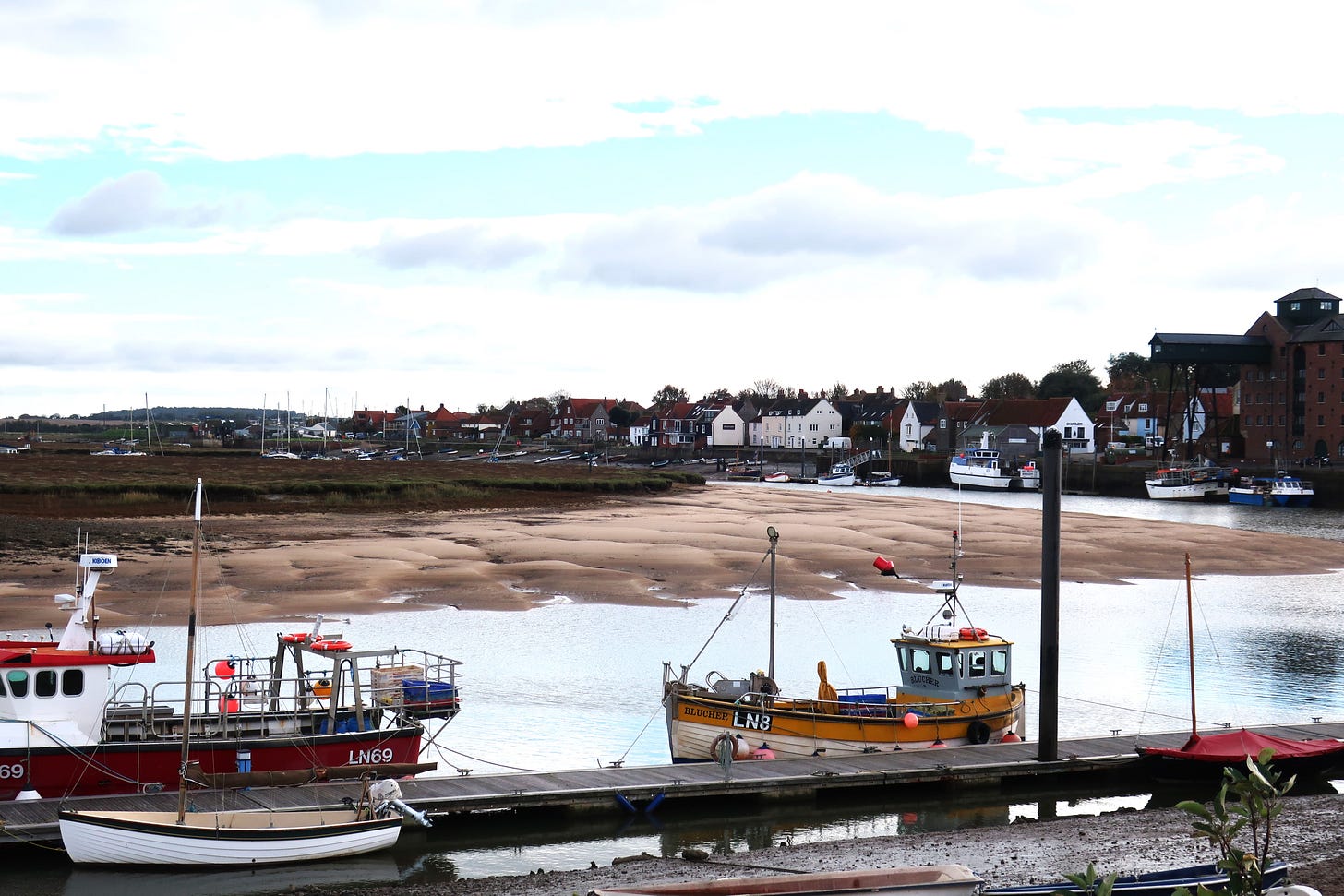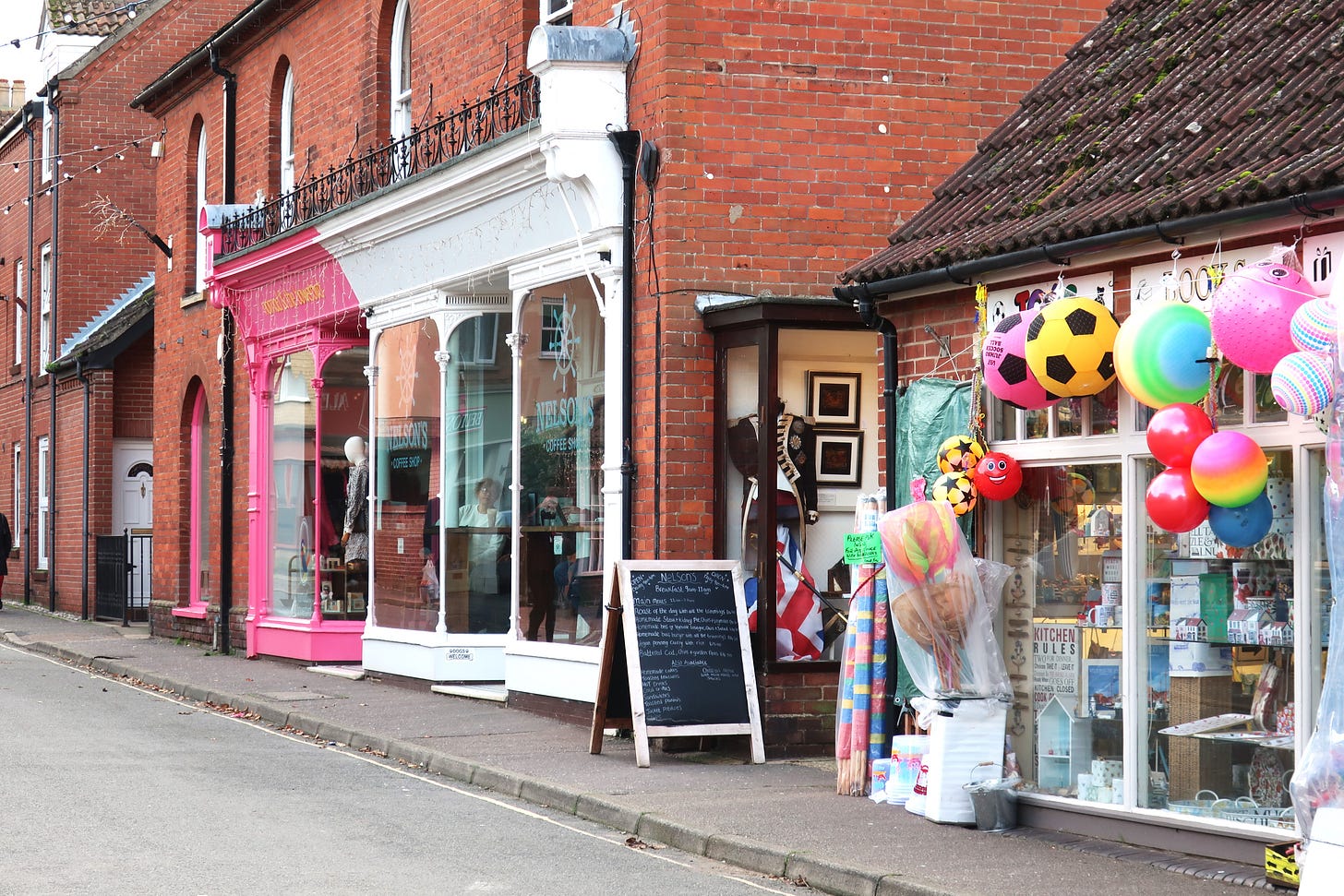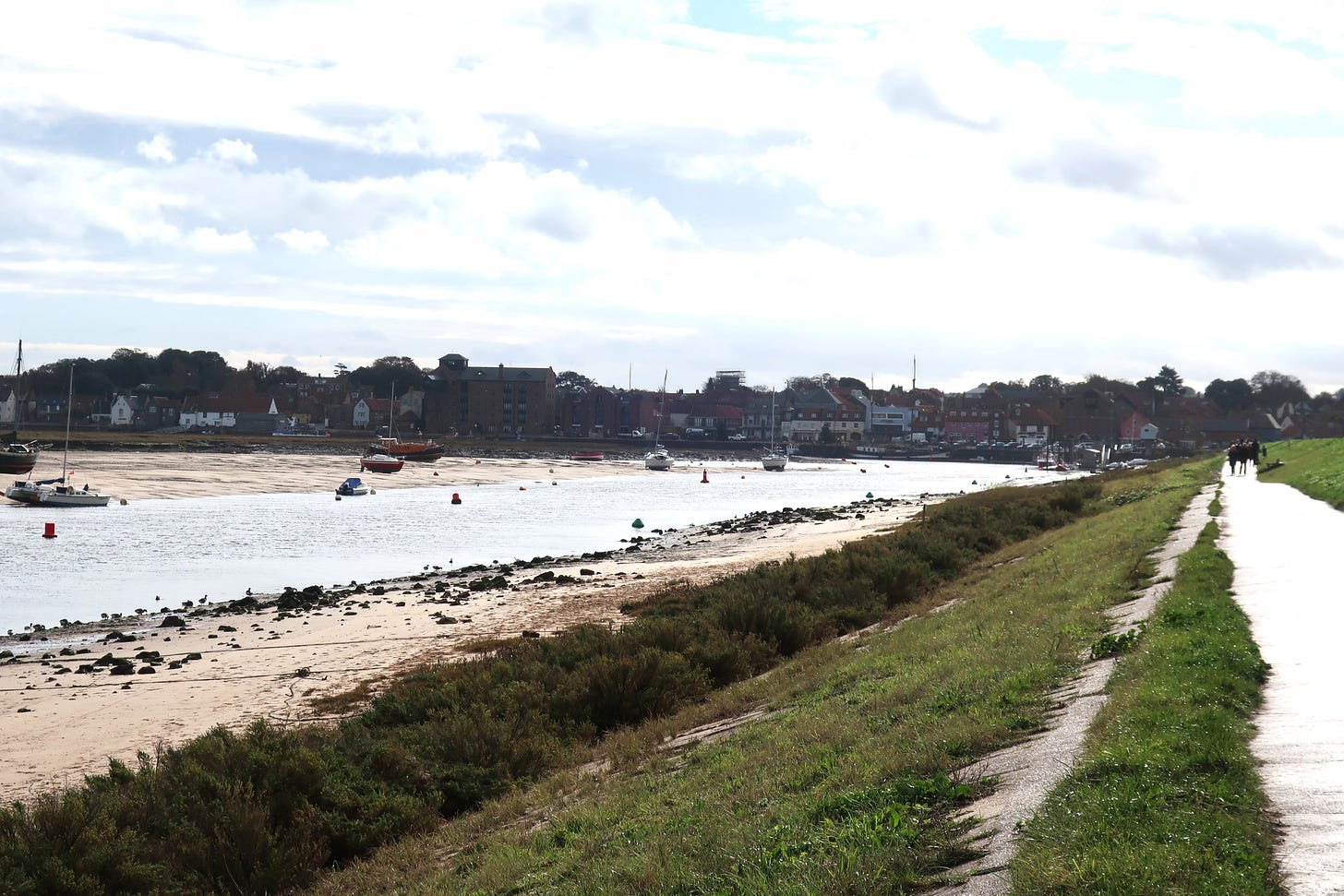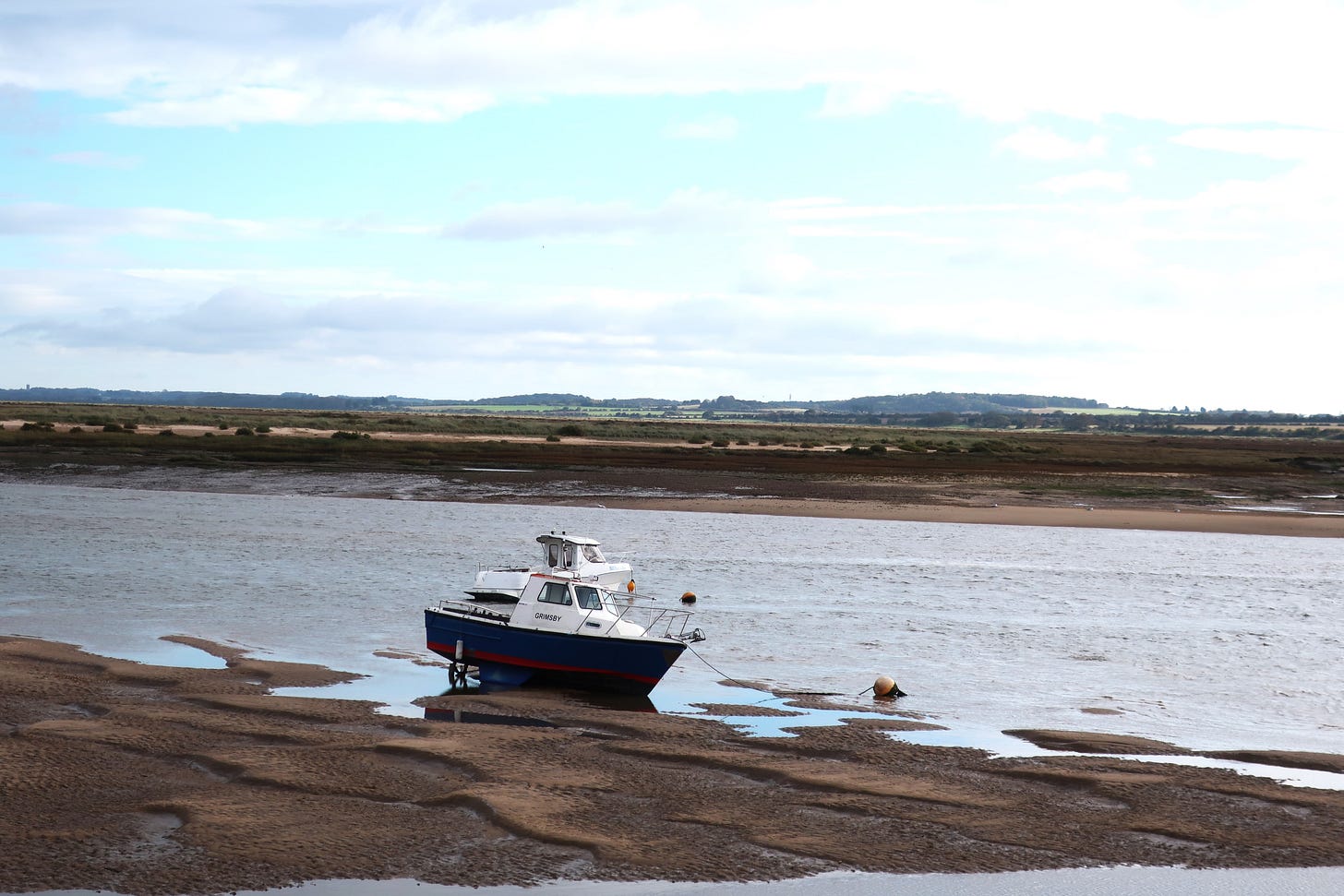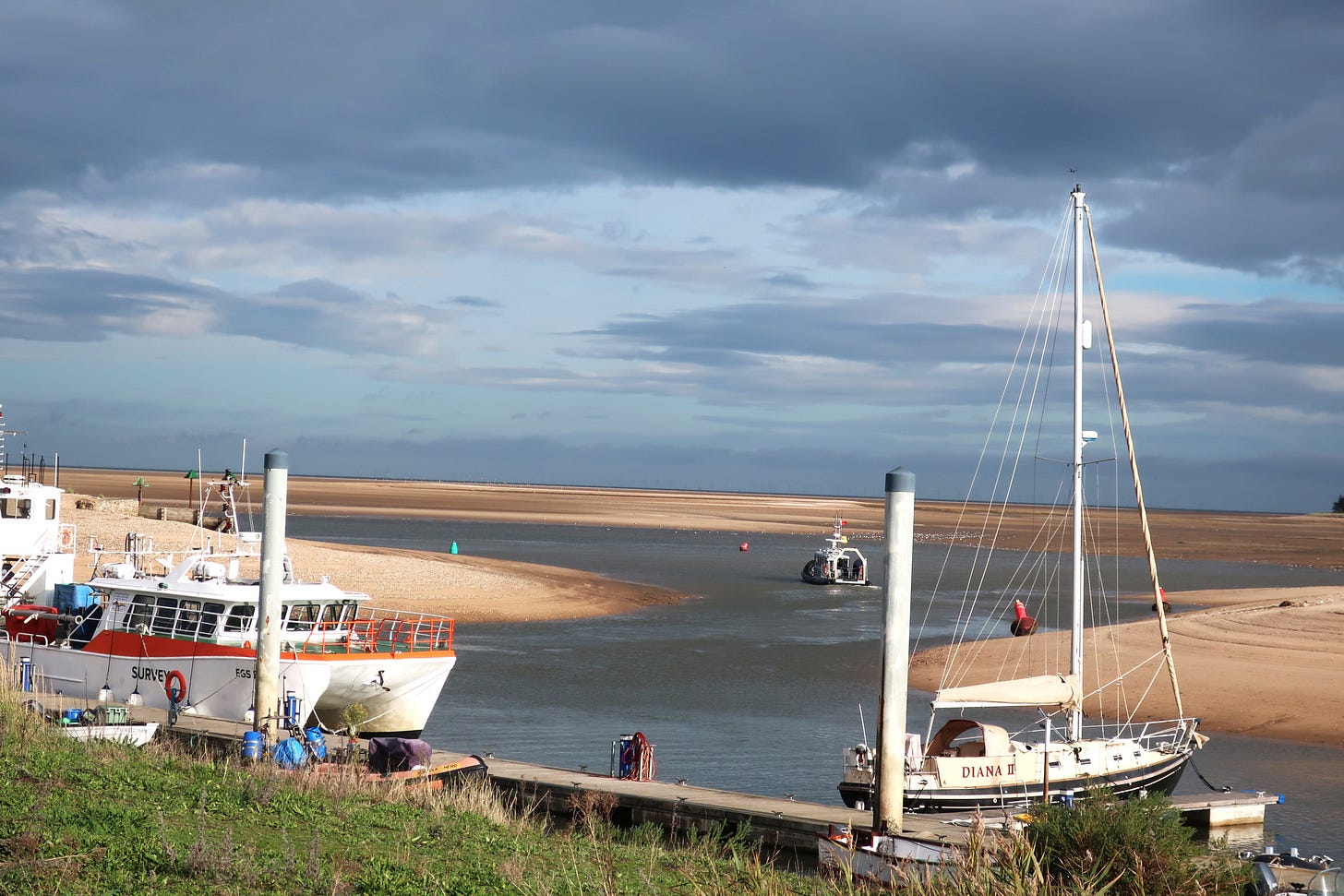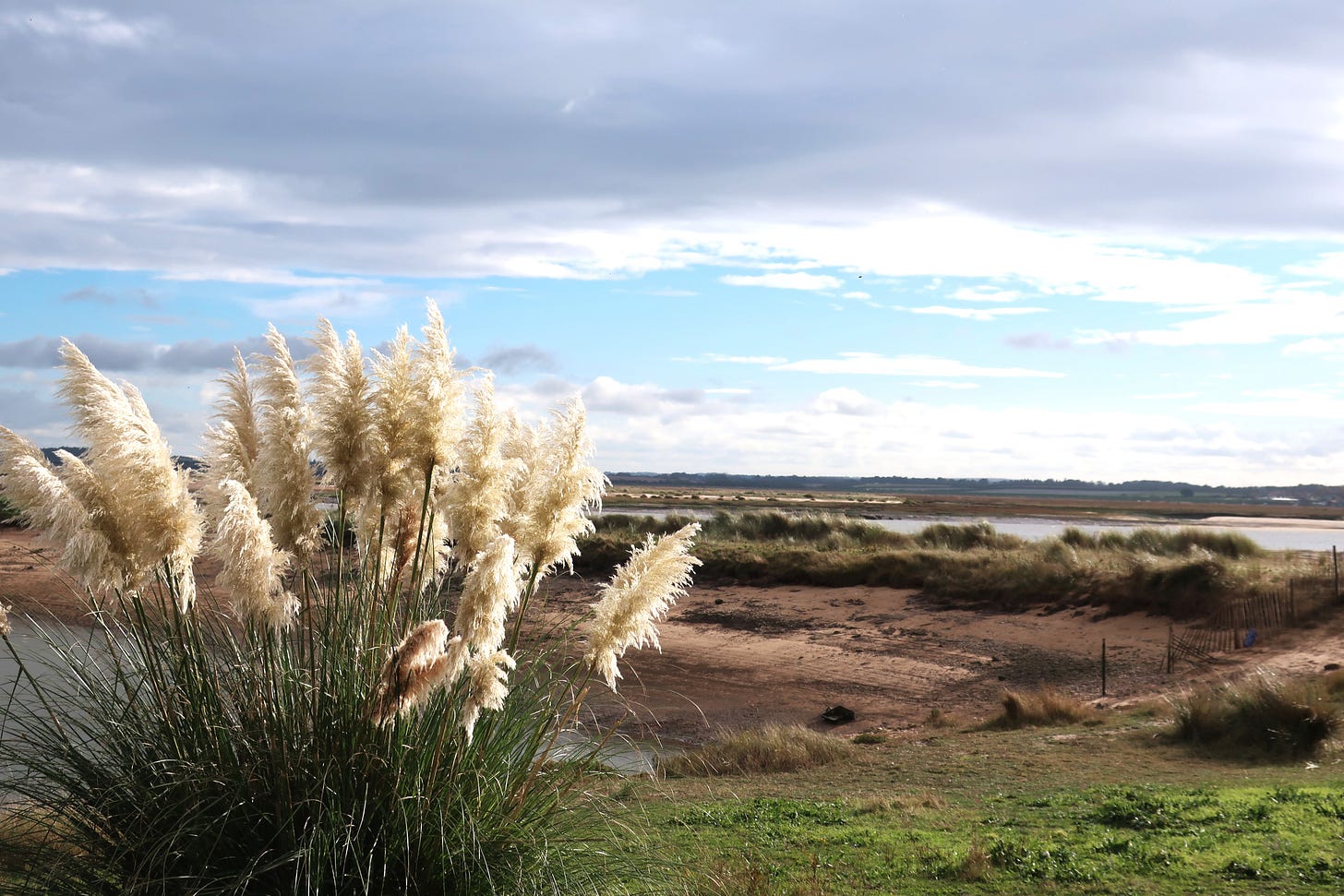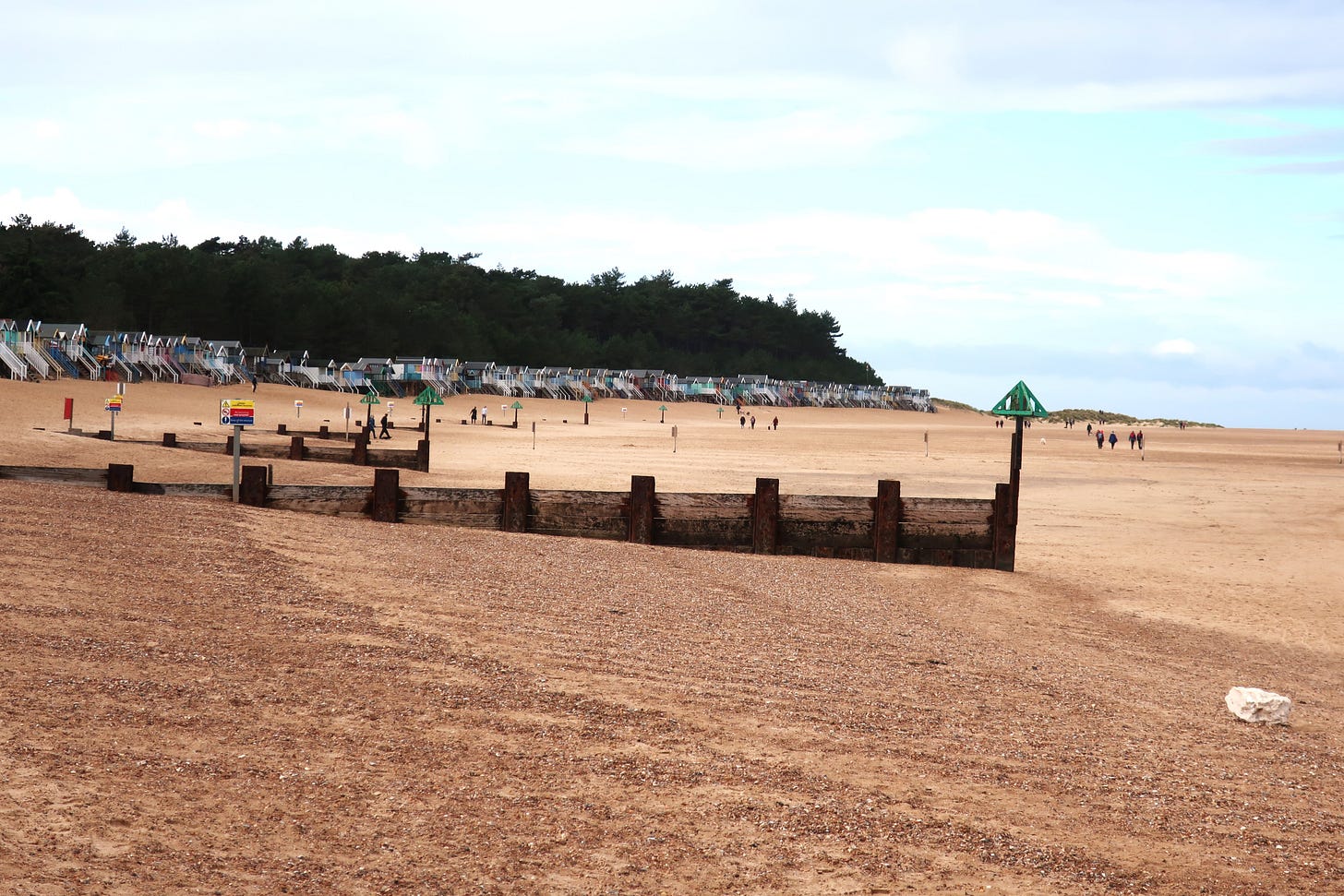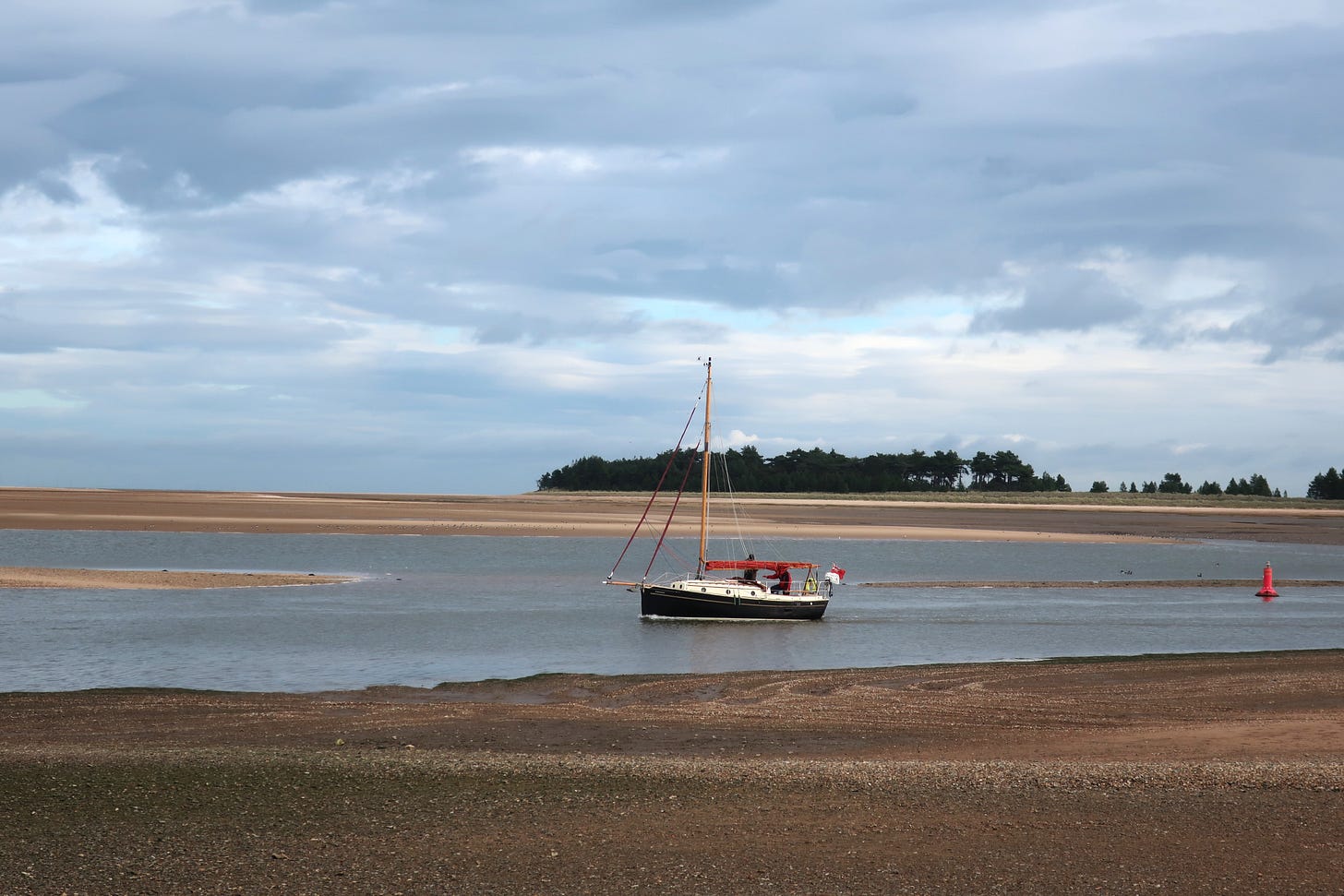Wells-next-the-Sea, Norfolk
I chose a sunny day for a bus ride to Wells-next-the-Sea. Like Holt, it’s less than 10 miles from Fakenham, and yet the two communities are so different. Wells (named for the many clear spring wells in the town) was an active fishing and shipping port for centuries and an important manufacturing town until quite recently, supplying large amounts of malt to the Dutch. (The roar of RAF fighter jets high overhead is another reminder of how close Norfolk is to Europe. I’m reminded of my father who was a navigator on a bomber during World War II.)
Butlands, a large park at the top of the town, is surrounded by Georgian and Victorian houses and reminded me of Holt.
Staithe Street leading down to the harbour is quite different. It’s narrow and somewhat quaint with stores catering to tourists – souvenirs, books and games for rainy days, tea and coffee shops, and some interior design stores with a coastal flavour.
Wells is an unusual resort town as it’s a 2-kilometre walk from the harbour to the beach. The harbour has silted in over the years and there is now just a narrow channel of water connecting the town to the North Sea. It’s a very popular walk, even in the winter, when there are throngs of dog-walkers and birders.
The channels of low water, sandbars, and marshy areas are popular with a wide variety of waterbirds. I was quite pleased to see and recognize the long curving beak of a curlew and to spot a little egret as well as what I believe were bean geese. And I’m always happy to spot a wagtail. Their bobbing tail makes them appear so cheerful.
Once reached, the beach stretches out over vast distances and is ringed by beach huts on stilts. The tide comes in fast here and there are signs warning tourists not to get caught out.
There has been a lifeboat station at Wells for over 100 years. It’s always moving to read about their rescue efforts. The sculpture of a horse in the harbour pays homage to the hard-working horses who used to pull the lifeboat more than 2 miles from the quay to Holkham Gap: “In the 1800s when rockets were fired to summon the lifeboat crew, the horses knew to gallop to the gate and be led down to the lifeboat house on the quay.” The horses were also used to haul heavy freight in the harbour. The sculpture is currently decorated with 109 poppies, one for each name listed on the town’s war memorial.




